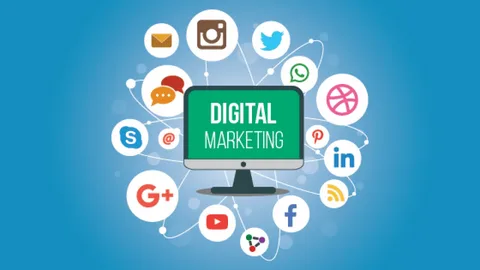Traditional authentication methods are becoming obsolete in a world rapidly moving towards digital transformation. Physical signatures, manual verifications, and paper-based processes no longer meet the needs of a fast-paced, secure, and globally connected digital economy. Among the most transformative tools in this shift is the digital signature online. More than just a technological convenience, digital signatures represent the future of authentication. Their integration into various industries is already proving how essential and effective they are for secure, verifiable, and fast transactions.
Understanding Digital Signature
A digital signature is a mathematical technique used to validate the authenticity and integrity of a digital message or document. Unlike a traditional handwritten signature, which can be easily forged or misinterpreted, a digital signature provides robust security through encryption. Digital signatures use public key infrastructure (PKI) to ensure that a document is not altered after it is signed and that the signer is uniquely identifiable.
The process to apply for a Digital Signature
1: Visit Our Website
Go to our website to start the process.
2: Fill in Your Details
- User Type: Choose if you are an individual or an organization.
- Certificate Type: Pick if you need it just for signing documents or for both signing and encryption.
- Validity: Choose how long you want the certificate to last.
- Personal Info: Enter your name, phone number, email, and address.
- Agree to Terms: Check the box to agree to the terms.
- Submit: Click the submit button.
3: Choose Token Option
- Already Have a Token?: If you have a USB token, choose “No.” If you need a new one, choose “Yes.”
4: Make Payment
- Payment: Enter your payment details and choose how you want to pay (net banking, credit card, debit card, or UPI).
5: Complete the Process
- Review: Make sure all your information is correct.
- Submit: Click submit and wait for a confirmation email.
6: Get Your Digital Signature
You’ll receive your digital signature on a USB token drive after processing.
How Digital Signatures Work
The process involves the use of a private key (known only to the signer) and a public key (available to anyone). When a document is signed, it is encrypted using the signer’s private key. The recipient or verifier uses the public key to decrypt the signature, ensuring that it matches the original document. If any part of the document is altered, the digital signature becomes invalid, thus providing an added layer of security and integrity.
The Role of Digital Signatures in Authentication
Authentication is about confirming identities and ensuring that users or systems are who they claim to be. Digital signatures play a vital role in this process by:
- Ensuring Data Integrity: Any alteration of the digitally signed document renders the signature invalid.
- Verifying Identity: Digital signatures uniquely tie the signature to the individual or entity using it.
- Non-Repudiation: Once a digital signature is affixed to a document, the signer cannot credibly deny having signed it.
Why Digital Signatures Are Gaining Popularity
Several factors are contributing to the widespread adoption of digital signatures across sectors:
- Speed and Efficiency: Transactions that once took days can now be completed in minutes.
- Cost-Effectiveness: Reduces the need for paper, printing, postage, and storage.
- Legal Validity: Digital signatures are recognized under laws such as the Information Technology Act in India and the eIDAS regulation in the European Union.
- Global Access: Enables seamless cross-border transactions without geographical barriers.
Applications Across Industries
- Banking and Finance: Digital signatures simplify and secure loan approvals, account openings, and financial transactions.
- Legal Sector: Enables the signing of contracts, affidavits, and agreements with full legal compliance.
- Healthcare: Used for signing prescriptions, patient records, and insurance claims securely.
- Government Services: Facilitates e-governance through digitally signed documents, tenders, and certifications.
- Education: Used for digitally issuing certificates, transcripts, and admission documents.
- E-Commerce: Helps authenticate transactions and streamline supply chain processes.
Security and Compliance
Security is paramount in digital transactions. Digital signatures are backed by:
- Encryption Standards: Uses robust algorithms like RSA, DSA, and ECC.
- Certifying Authorities (CAs): Trusted entities that issue digital signature certificates (DSC).
- Audit Trails: Tracks who signed what and when, maintaining a full log.
- Compliance Regulations: Digital signatures meet various international and local compliance standards.
Integration with Emerging Technologies
As technologies like AI, blockchain, and IoT evolve, digital signatures are finding new relevance:
- AI: Enhances verification and fraud detection.
- Blockchain: Provides immutable recordkeeping.
- IoT: Ensures secure communication between smart devices.
Challenges and Considerations
While digital signatures offer many benefits, certain challenges remain:
- Digital Divide: Limited access in rural or underdeveloped areas.
- Awareness: Many users are still unfamiliar with how to use digital signatures.
- Implementation Costs: Initial setup may be costly for small businesses.
- Regulatory Variation: Different countries have different legal frameworks.
Future Outlook
The future of digital authentication lies in enhanced, user-friendly digital signatures. With increasing digital adoption, regulations becoming more inclusive, and technology evolving rapidly, digital signatures are set to become the norm in personal, business, and governmental authentication.
Also read:- What is emudhra?
Conclusion
Digital signatures are not just a technological advancement; they are a fundamental shift in how the world authenticates identity and secures information. As we move further into a paperless, fast-paced, and interconnected world, digital signatures stand as a cornerstone of trust, legality, and efficiency. Their ability to provide secure, verifiable, and universally acceptable authentication makes them indispensable in the future of digital transactions.
From small businesses to global enterprises, and from individual users to national governments, the adoption of digital signatures online is a testament to their immense value. Indeed, the digital signature is more than a tool — it’s the future of authentication.











Leave a Reply